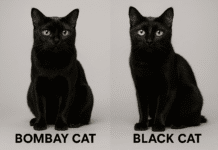Last Updated on July 16, 2024 by Asfa Rasheed
Table of Contents
Introduction
As pet owners, we want the best possible care for our beloved companions. However, the rising costs of veterinary treatments can pose a significant financial burden. Pet insurance has emerged as a solution to mitigate these costs, providing peace of mind and financial support during unexpected medical emergencies. However, not all pet insurance providers have good intentions. This article aims to guide you in avoiding pet healthcare scams, ensuring you choose the right insurance plan for your furry friend.
Understanding Pet Insurance
2.1 What is Pet Insurance?
Pet insurance is a type of coverage that helps cover the costs of veterinary care for your pet. It operates similarly to human health insurance, with various policies offering different levels of coverage. Pet insurance can provide reimbursement for veterinary visits, surgeries, medications, and even preventive care, depending on the plan you choose.
2.2 How Does Pet Insurance Work?
When you purchase a pet insurance policy, you pay a monthly or annual premium to the insurance provider. In return, the insurance company agrees to cover a portion of your pet’s veterinary expenses based on the terms of the policy. Typically, you will need to pay the veterinarian upfront and then submit a claim for reimbursement from the insurance company.
Common Pet Healthcare Scams
3.1 Fake Pet Insurance Providers
Unfortunately, some unscrupulous individuals take advantage of pet owners’ trust by offering fake pet insurance plans. These scammers often advertise unrealistically low premiums and promise extensive coverage. However, when it comes time to make a claim, they disappear or provide excuses for not honoring the policy. It’s crucial to be cautious and thoroughly research any pet insurance provider before committing to a policy.
3.2 Unauthorized Claims
Another common scam involves unauthorized claims. Dishonest individuals may submit claims for nonexistent treatments or services, trying to exploit the insurance provider. This fraudulent activity can increase premiums for all policyholders and damage the reputation of legitimate insurance companies. Understanding the red flags associated with these scams can help protect you from falling victim to them.
Red Flags to Watch Out For
4.1 Unrealistically Low Premiums
One of the telltale signs of a pet insurance scam is an offer with unrealistically low premiums. While everyone wants to save money, excessively low premiums may indicate a scam. Legitimate insurance providers must maintain a balance between affordable premiums and coverage benefits. If an offer seems too good to be true, it’s important to exercise caution and investigate further.
4.2 Lack of Transparency
Transparency is vital when choosing a pet insurance provider. Scammers often avoid providing detailed information about coverage, exclusions, or the claims process. Legitimate insurers have transparent policies and readily share information about what is covered, what is not covered, and how the claims process works. If a provider is hesitant to answer your questions or lacks transparency in their communications, it’s a clear red flag.
Researching Pet Insurance
5.1 Check for Legitimate Providers
To avoid pet healthcare scams, it’s essential to research and choose a legitimate pet insurance provider. Start by checking if the provider is licensed and registered with the appropriate regulatory authorities. Legitimate companies are transparent about their licensing and provide their credentials upon request. Additionally, reputable providers often have affiliations with veterinary associations or organizations.
5.2 Read Reviews and Testimonials
Reading reviews and testimonials from current or previous customers can provide valuable insights into the reputation and reliability of a pet insurance provider. Look for reviews on independent review websites or pet owner forums to get an unbiased understanding of the experiences of other pet owners. Pay attention to any recurring complaints or warning signs mentioned by multiple reviewers.
Understanding Coverage and Exclusions
6.1 Types of Coverage
Understanding the types of coverage offered by pet insurance policies is crucial in making an informed decision. Common types of coverage include accident-only coverage, illness coverage, and comprehensive coverage that includes both accidents and illnesses. Each type of coverage has its own benefits and limitations, so it’s important to assess your pet’s specific needs and choose a policy that aligns with them.
6.2 Common Exclusions
Exclusions are specific conditions or situations that are not covered by a pet insurance policy. Familiarizing yourself with common exclusions can help you avoid unpleasant surprises when filing a claim. Some common exclusions may include pre-existing conditions, hereditary conditions, elective procedures, and behavioral issues. Carefully review the policy’s exclusions and make sure you understand them before finalizing your decision.
Making an Informed Decision
To make an informed decision when selecting pet insurance, consider factors such as the cost of the premium, the deductible amount, the reimbursement percentage, and the annual or lifetime coverage limits. Assess your pet’s health history, breed, and potential risks to determine the level of coverage you need. It’s also advisable to consult with your veterinarian, who can provide guidance based on your pet’s specific needs.
Conclusion
Pet insurance offers a valuable safety net for pet owners, but it’s crucial to navigate the market carefully to avoid pet healthcare scams. By understanding the basics of pet insurance, recognizing red flags, researching providers, and understanding coverage and exclusions, you can protect your pet’s health and your financial well-being. Make an informed decision based on your pet’s needs, and remember to review and update your policy as your pet’s health requirements change over time.
Apart from that, if you are interested to know about Pet beds for young delicate pets by HiPet then visit our Pets category.
















